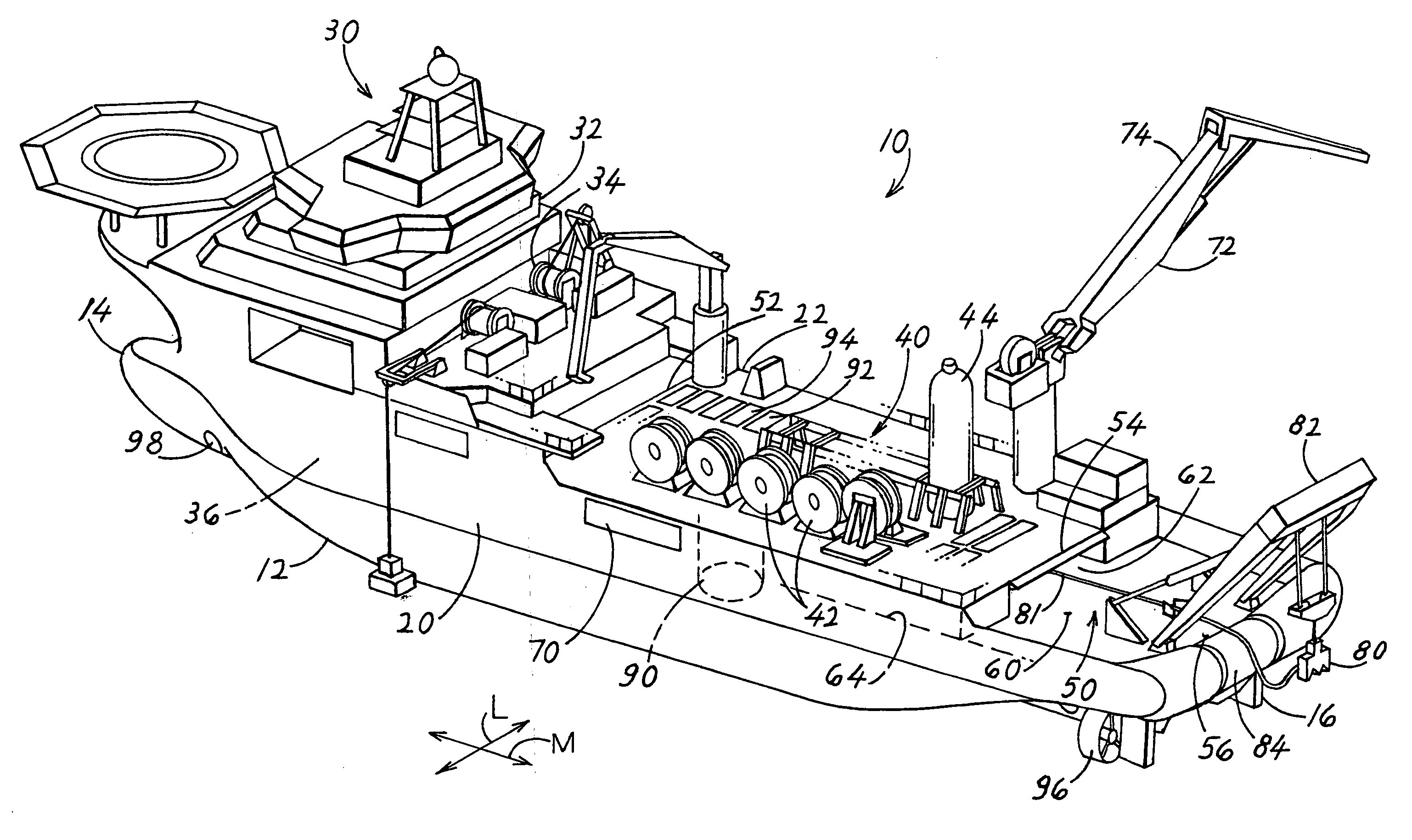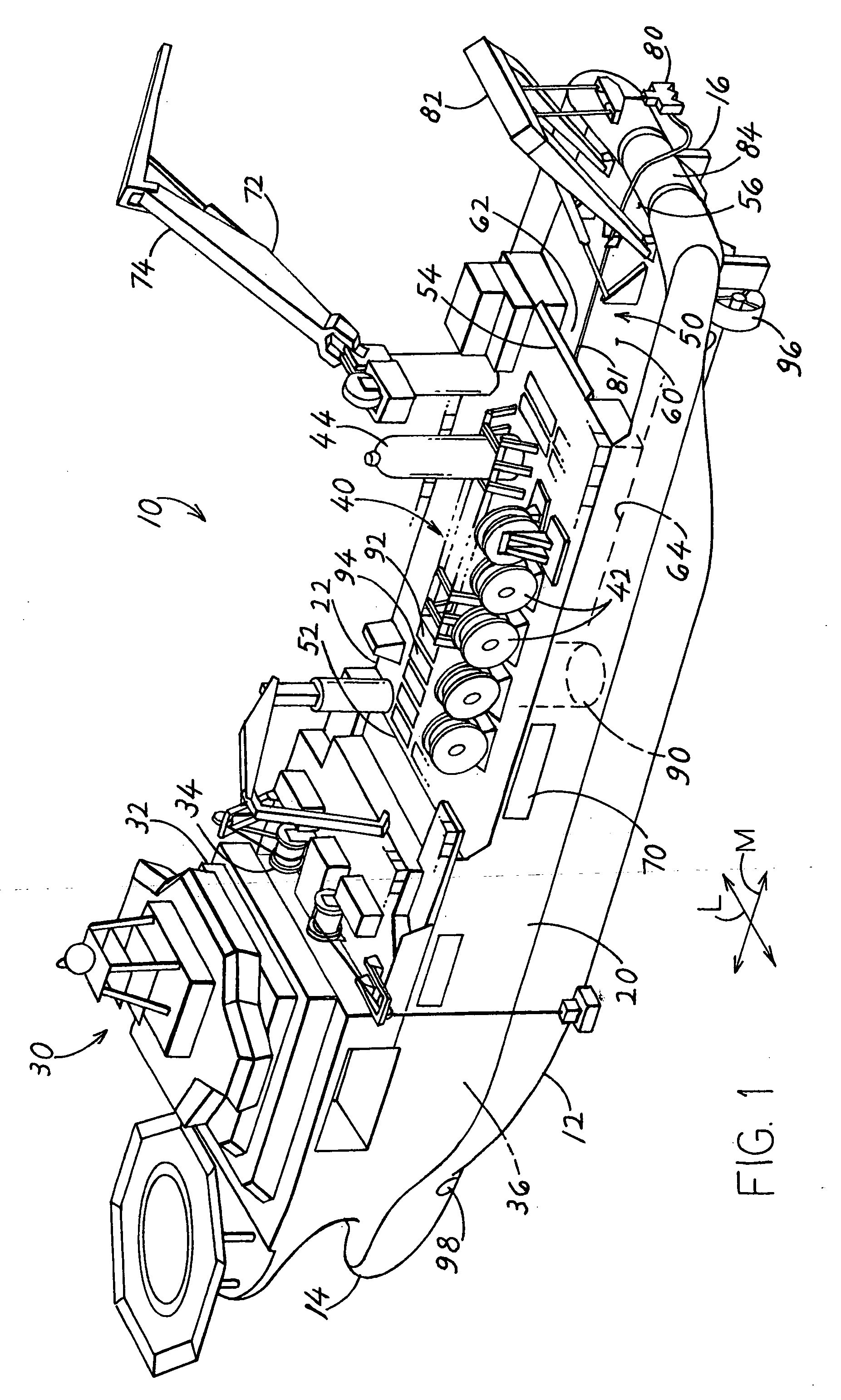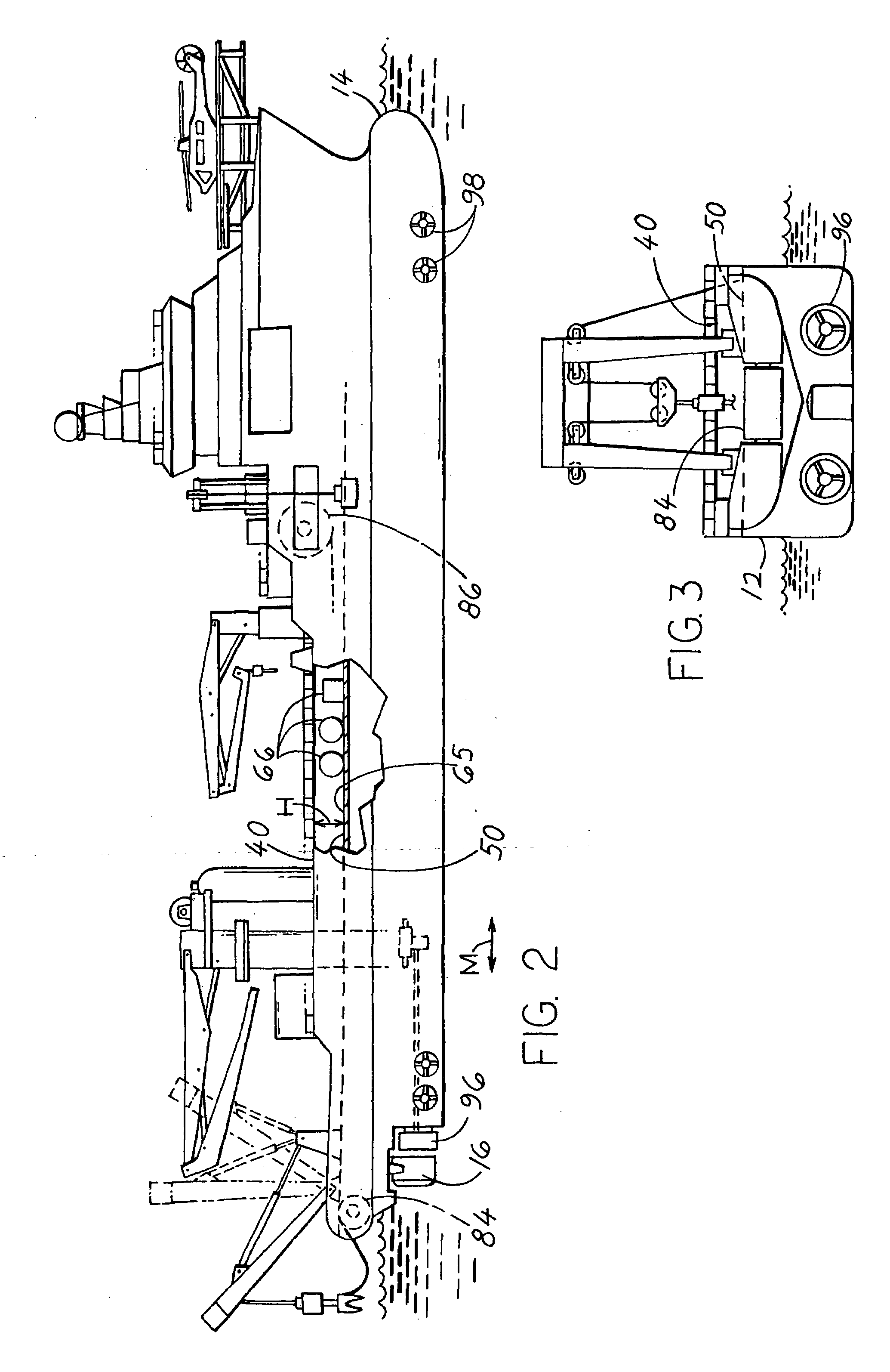Deep water installation vessel
a technology for installing vessels and deep water, which is applied in the field of deep water installation vessels, can solve the problems of limited space limited space, and danger to personnel working on the work deck, and achieves the effects of large deck space, convenient storage and movement, and convenient storag
- Summary
- Abstract
- Description
- Claims
- Application Information
AI Technical Summary
Benefits of technology
Problems solved by technology
Method used
Image
Examples
Embodiment Construction
[0011]FIG. 1 illustrates an installation vessel 10 which includes a hull 12 having a bow 14, a stern 16, and port and starboard sides 20, 22 that form the periphery of the vessel. The front portion 30 of the vessel is occupied by a helicopter deck, a navigation bridge, control rooms and crew quarters, ROV (remotely operated vehicles), heavy duty winches 34 for ROV handling and control rooms for them, and other heavy equipment. Below-deck portions 36 of the vessel are occupied by fuel tanks, engines, chain lockers and other heavy equipment. All of the foregoing equipment is stored in the installation vessel when it is outfitted to ready it to sail what may be a long distance, to a mobilization harbor that is located near the site where the installation will occur. At the mobilization harbor, supplies that will be used up in the installation, and specialized installation equipment for the particular site, are loaded onto the vessel, and the vessel sails to the installation site. The i...
PUM
 Login to View More
Login to View More Abstract
Description
Claims
Application Information
 Login to View More
Login to View More - R&D
- Intellectual Property
- Life Sciences
- Materials
- Tech Scout
- Unparalleled Data Quality
- Higher Quality Content
- 60% Fewer Hallucinations
Browse by: Latest US Patents, China's latest patents, Technical Efficacy Thesaurus, Application Domain, Technology Topic, Popular Technical Reports.
© 2025 PatSnap. All rights reserved.Legal|Privacy policy|Modern Slavery Act Transparency Statement|Sitemap|About US| Contact US: help@patsnap.com



